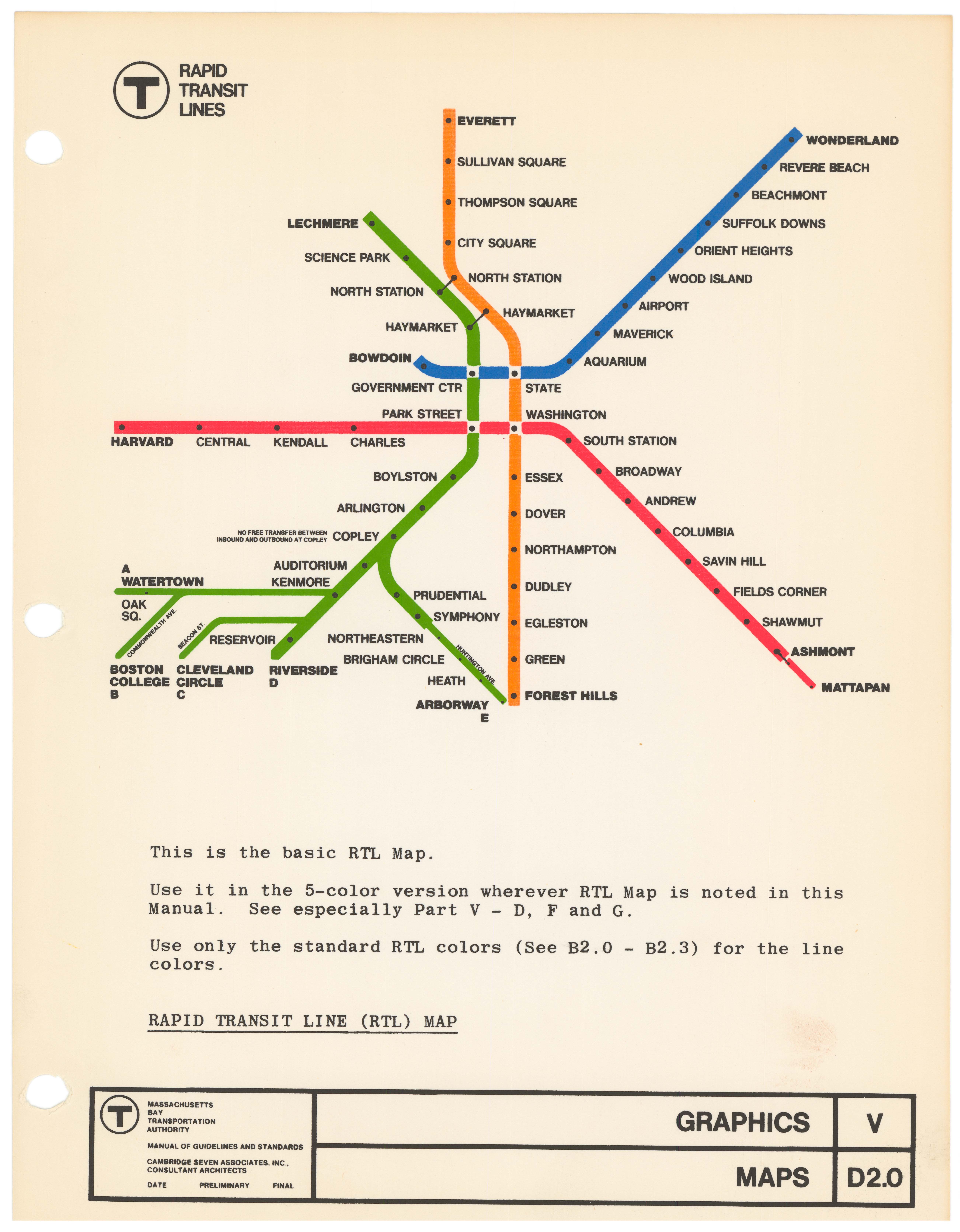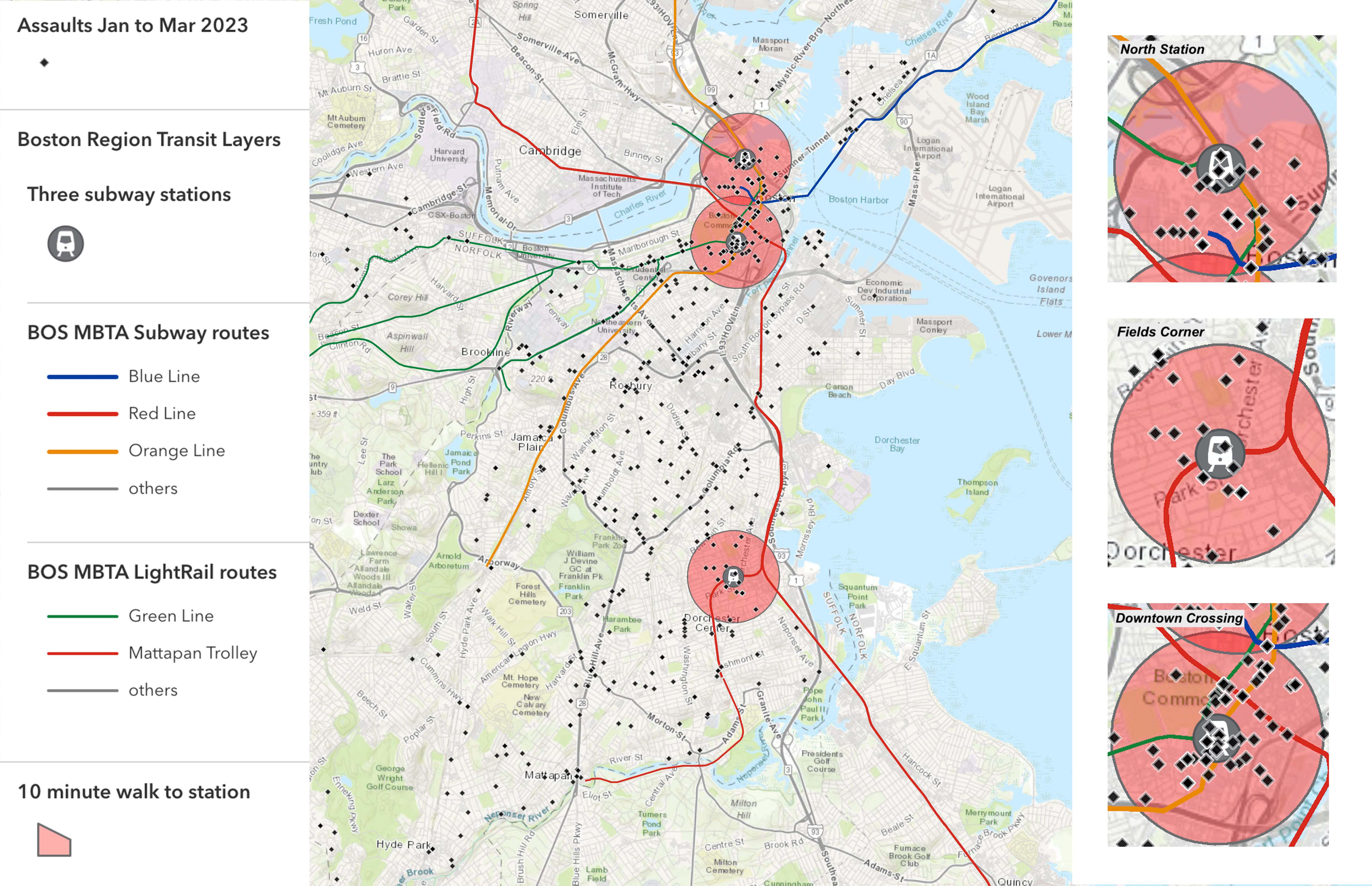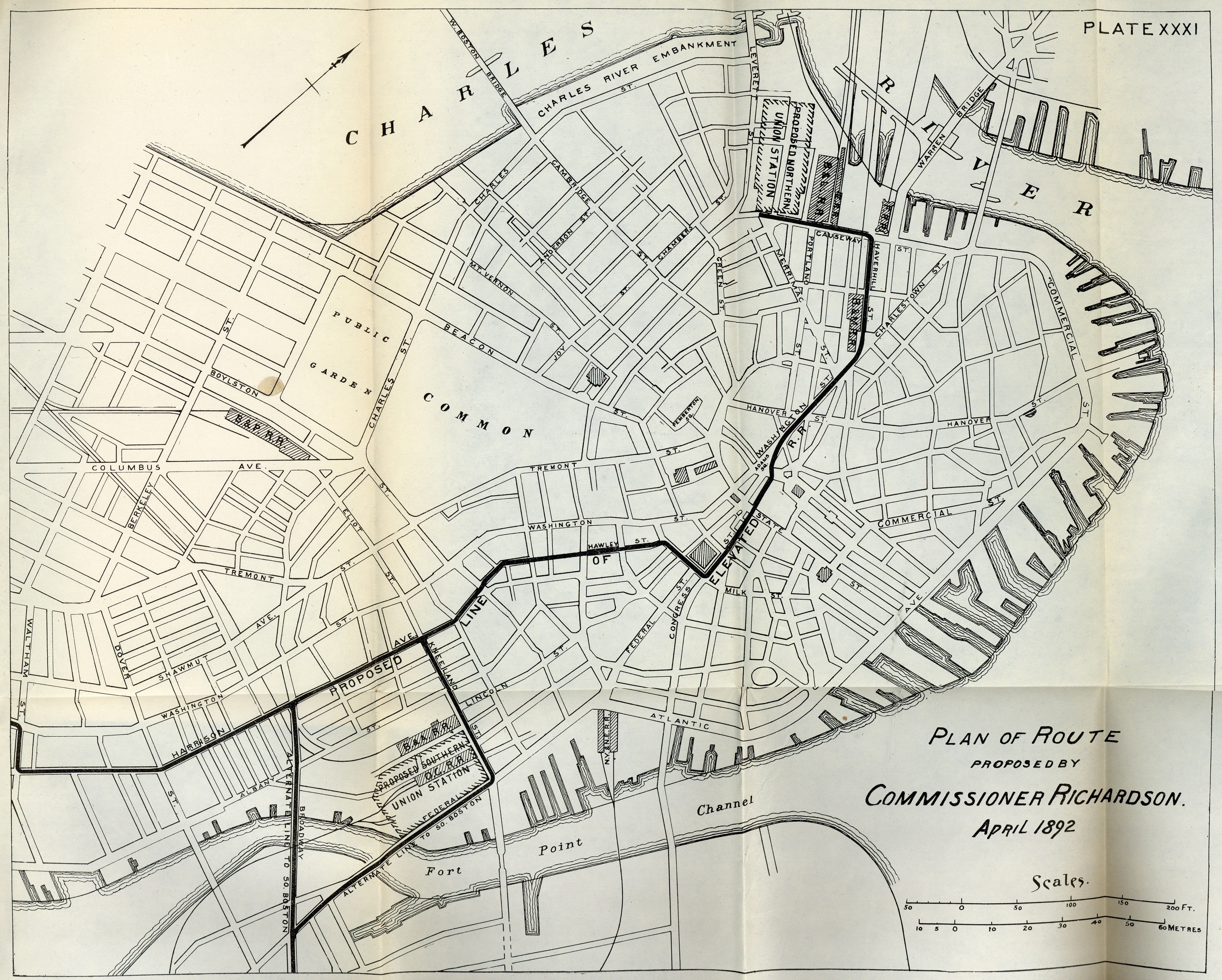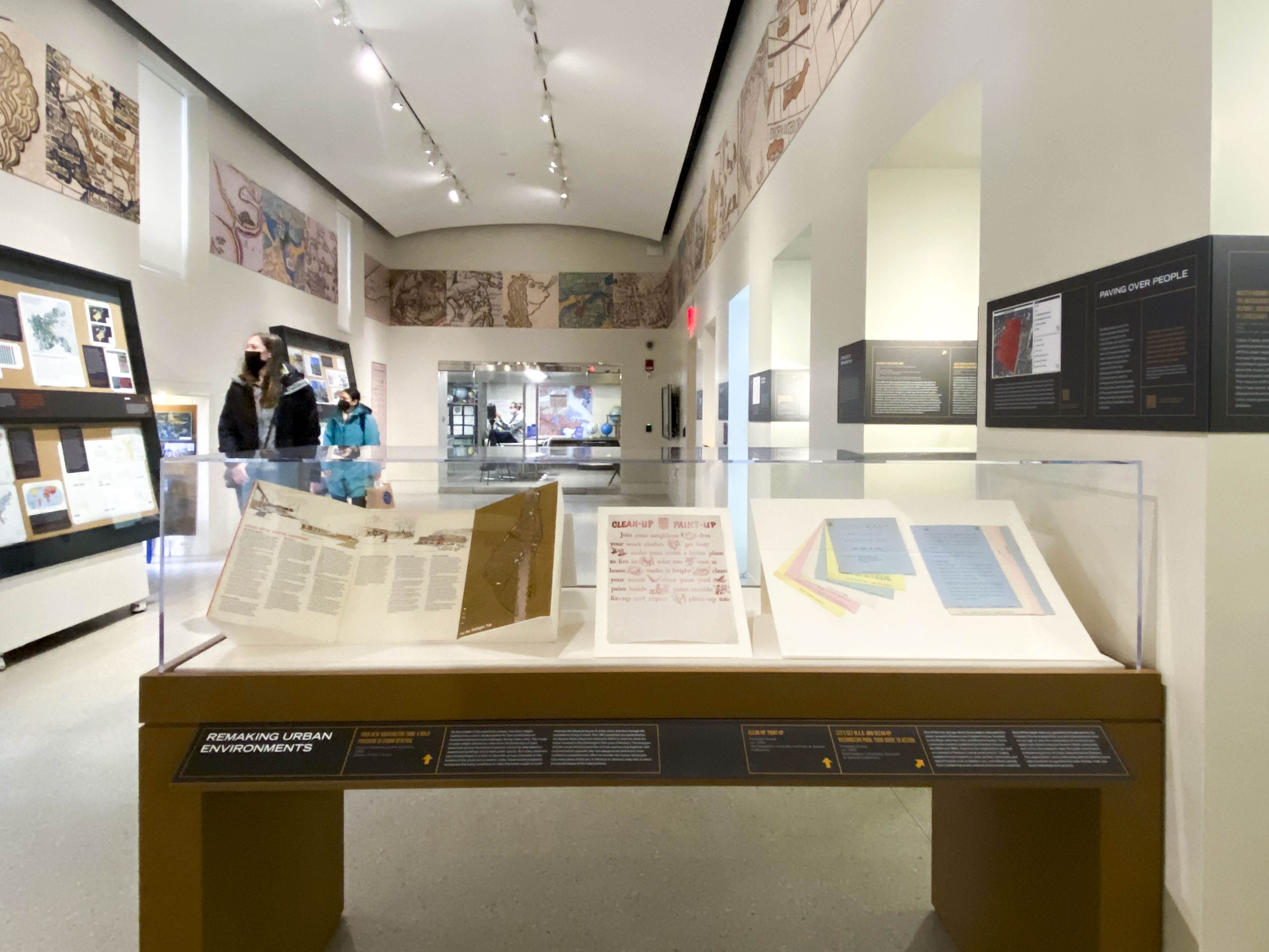Inaccessible Transit: Unequal Access
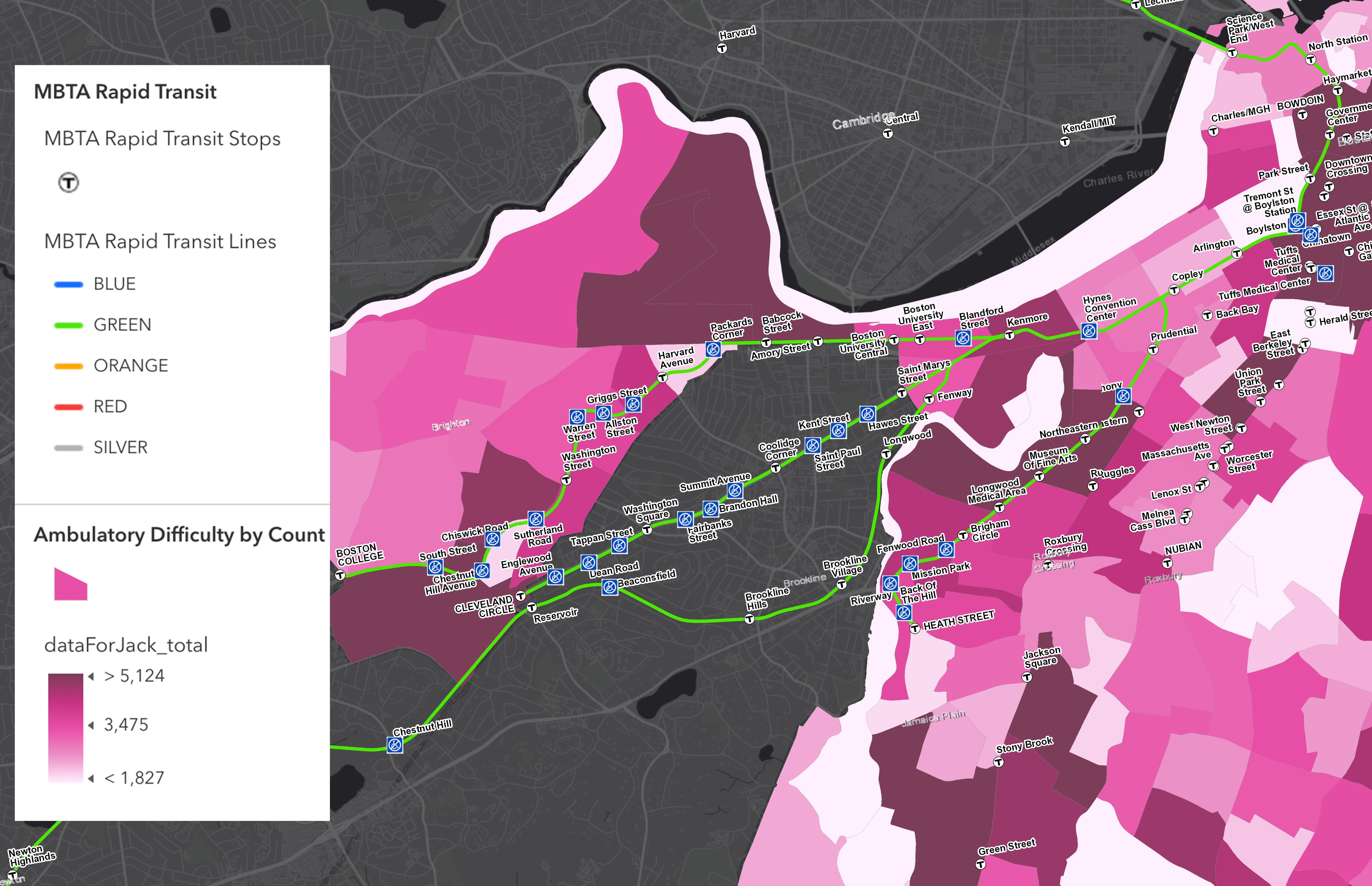
This map shows the accessibility of the Green Line on the MBTA, displaying the many stops on it which are not accessible. The Green Line on the map represents the Green Line and its stops, and the small blue wheelchair symbol with a cross over it represents the non-accessible stops. Furthermore the colors represent people who have self-identified as having ambulatory difficulties—the darker the color, the more people with ambulatory difficulties in that area.
To create this map, I first found a dataset which had all of the MBTA train lines and then removed all of the lines except for the Green Line. Then I used data directly from the MBTA website in order to find which stops were not accessible. For every stop which the website said was not accessible, I added the blue “not accessible” symbol to that stop on the map. My final step was to locate a dataset which depicted the amount of people within different census tracts of Suffolk County (Boston) who had difficulty walking and thus needed accessible stops to use the train. I emailed Tori Cowger, who works at the Boston Public Health Commission, and she was able to direct me to a dataset from the United States Census Bureau which had the data I needed. After the many difficulties which occurred while we tried to manipulate the data, eventually, with some help, I got the data to the point where it displayed the totals of people with ambulatory difficulties in each census tract. I added this data to the map to display the amount of people in each census tract with ambulatory difficulties.
From this map, I hope it is clear that we must make it a priority to ensure that all T Stops are accessible so that there is equality on public transportation. As you can see on the map, there are people all across Suffolk County/Boston who have ambulatory difficulties and are likely in need of accessible train stops. Everyone has a right to be able to take public transportation, but there are many people who live with ambulatory difficulties along these non-accessible Green Line stops and cannot take the train because of it. I hope from my map you can see how important it is that we prioritize making the MBTA completely accessible so we can move towards a truly equal MBTA.

